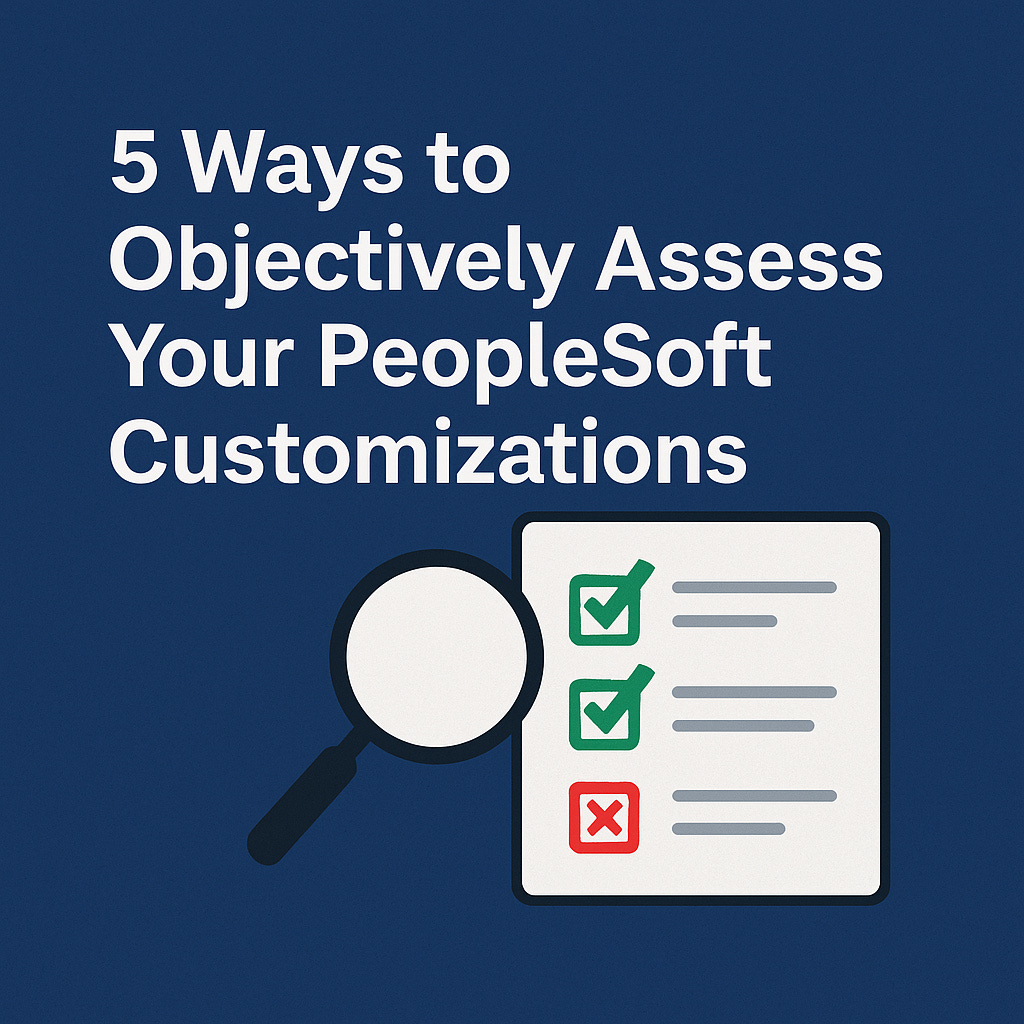5 Ways to Objectively Assess Your PeopleSoft Customizations (Before Moving to SaaS)
In my recent article, “10 Steps to Get Your PeopleSoft System Ready to Move to a SaaS Solution,” I outlined the key areas to focus on before making any cloud or SaaS transition. This post continues that series, diving into Step 2: Assess Customizations Objectively.
For most organizations, customizations are both the reason PeopleSoft works so well and the reason it’s hard to move on. Over the years, “just one small change” has turned into hundreds of tweaks that make your system unique and complex. Before you can plan for SaaS, you need to determine which of those customizations still serve your needs, which ones no longer do, and what their actual cost is.
Here are five ways to assess your customizations with clarity and purpose.
✅ 1. Inventory Every Customization — No Exceptions
Start by identifying everything that has been modified. That means PeopleCode, App Engines, SQRs, bolt-ons, database triggers, and even configuration overrides. Use your version control system (if you have one) or compare against delivered objects in Application Designer. Don’t rely on memory; document it. Each customization should include its purpose, the business owner, the last time it was updated, and the module it affects. This list becomes your baseline for all future decisions.
✅ 2. Ask the Hard Question: “Why Does This Exist?”
Every customization should have a story. Some exist because of regulatory requirements or union agreements. Others exist because someone didn’t know a delivered feature could handle it. Sit down with the business owner and ask: Is this customization still solving a problem we have today? If not, it’s time to retire it. SaaS transitions are a perfect moment to challenge the “we’ve always done it this way” mindset.
✅ 3. Separate Strategic Value from Technical Debt
Not all customizations are bad. Some represent your organization’s unique value. These are the processes that allow your business to achieve market differentiation. Others are pure technical debt. Classify each customization by its strategic importance and maintenance cost. High-value/low-maintenance changes should be retained or reimagined. Low-value/high-maintenance customizations are prime candidates for removal. This simple two-axis view helps you identify which efforts are worth investing in SaaS and which can be eliminated.
✅ 4. Evaluate Replaceability in SaaS
Once you understand what you have and why it exists, evaluate how it aligns with potential SaaS solutions. Many modern SaaS ERPs offer configurable workflows and low-code extensions that can replace traditional customization. Others may not. Identify whether each item can be handled by delivered functionality, replaced by a configuration, replicated with an integration, or rebuilt in a SaaS platform’s extension framework (like Oracle Visual Builder or Workday Extend). Knowing this up front avoids costly surprises later.
✅ 5. Measure the Long-Term Cost of Customization
Every customization you keep will cost you. Whether it’s future upgrade complexity, testing overhead, or SaaS platform integration fees. Assign a cost estimate to maintaining or rebuilding each item. Even rough numbers help quantify the trade-offs. When your executive team sees the real cost of “keeping everything,” conversations about simplification and standardization become much easier.
🎯 Why This Matters
Customizations are where strategy and technology collide. They define what makes your organization unique, but also what makes it fragile. By documenting, challenging, and categorizing them now, you give your future SaaS project a head start. You’ll enter every migration discussion with clarity, not guesswork, and a concrete plan for what stays, what goes, and what evolves.
Because readiness isn’t just about moving systems, it’s about knowing what’s worth taking with you.



